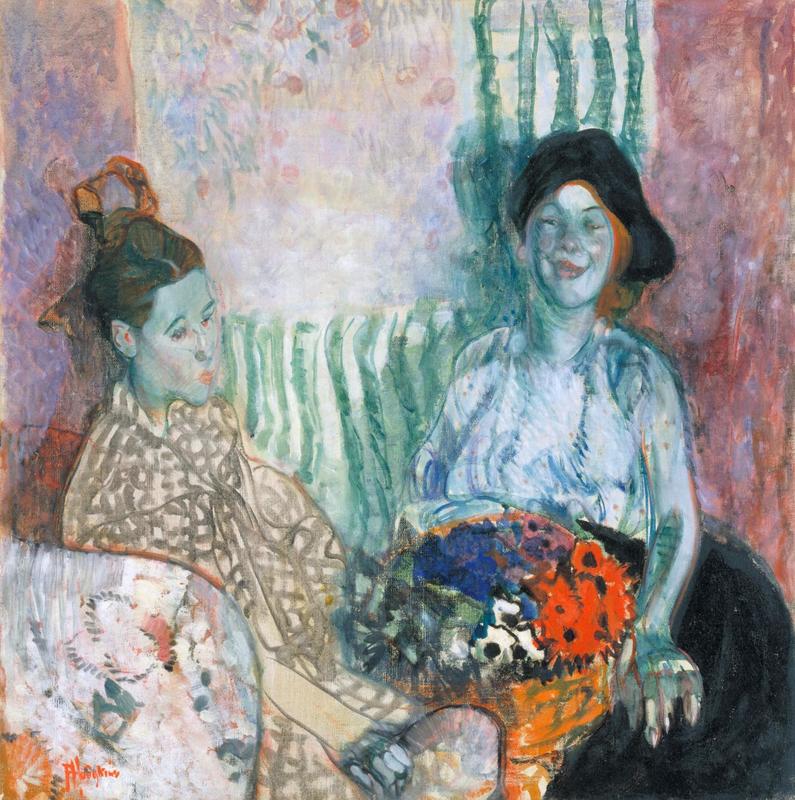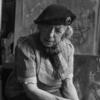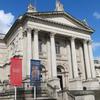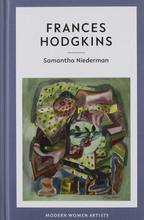More about Loveday and Ann: Two Women with a Basket of Flowers
- All
- Info
- Shop

Contributor
Like the works of Pablo Picasso's Blue Period, Frances Hodgkins's Loveday and Ann: Two Women with a Basket of Flowers shows the melancholy feeling of the artist, who was feeling blue at the artists' colony at St. Ives on the Cornish seaside, which she pejoratively referred to as the "Funk Hole."
It's hard for many people, especially expatriate artists like Hodgkins, to leave Paris, where you could sit in a café until the wee hours talking about art and music, then grab a baguette for pennies in the morning. Hodgkins didn't have much of a choice, because her time in the City of Lights was rudely interrupted by the First World War. The war threw a wrench in her whole operation, which was an experiment in social interaction and artistic cross-pollination, as well as a solitary painting practice.
Early in the year she created this painting, Hodgkins wrote a tearful dispatch to her mother back in New Zealand, Rachel Owen Parker. Not only was St. Ives as funky as vintage toejam, but it was lonely there, too, because Hodgkins felt that she had no friends, as she'd had in Paris. She wrote: "I find I am too modern for people down here & I am conscious of the cold eye of distrust & disapproval by the older members of St. Ives." Art historians Catherine Hammond and Mary Kisler note that sudden government restrictions, due to wartime hazards, clamped down on plein air painting along the Cornish coast. This was the same rugged coast whose countenance had graced the works of J.M.W Turner and James Abbott McNeill Whistler, now off-limits due to the government's extreme distrust of artists, whose every line and gesture could be some kind of spy code. "Spies have been very active in Cornwall," Hodgkins wrote to her mother on February 4th, "& the St. Ives people are feeling very sick because they were so nice to a young German Count who took a studio here last year." Thanks to his genteel manner, the St. Ives community figured they could count on the Count and swallowed his backstory whole. When the war started, the British raided the Count's studio and found "charts of every cove, road, track, rock & currents" of the surrounding area, but the Count himself managed to skip town. "The British flesh doesn't creep very easily," Hodgkins wrote to her mother later that month, "but I fancy people are uneasy & anxious."
It was against this backdrop of general fear that Hodgkins decided on blue for the skin tone of Loveday and Ann. In the New Witness newspaper, a male reviewer compared Loveday and Ann to a work by Augustus John, adding that Hodgkins is "right off the rails…it is not portraiture, or if it is I never want to meet Loveday and Ann." The issue in question was the blue color of the women, which is perfectly good enough for Cookie Monster and Milhouse van Houten but, apparently, not for crabby reviewers. Loveday and Ann were, of course, not actually blue, but were in fact two daughters of local fishermen who Hodgkins used as models.
Socially distancing herself was a tall order, but in the confines of her coastal studio, Hodgkins produced a series of daringly radical works in addition to this one, including Unshatterable, a touching portrayal of Belgian refugees, and Mr. and Mrs. Moffat Lindner and Hope, which portrays the first owners of Loveday and Ann, the painter Peter Moffat Lindner (1852-1949) and his wife, who were also residents of St. Ives. As a double portrait, this work "follows a long-standing tradition in Hodgkins's oeuvre," and which is also seen in Double Portrait (1922-25) and The Bridesmaids (1930).
Sources
- Buchanan, Iain. Frances Hodgkins: Paintings and Drawings. Auckland: Auckland University Press, 2001.
- Creese, Mary, and Thomas Creese. Ladies in the Laboratory III: South African, Australian, New Zealand, and Canadian Women in Science: Nineteenth and Early Twentieth Centuries. Toronto: Scarecrow, 2010.
- Day, Melvin. Frances Hodgkins: commemorative issue. Caldwell, ID: Caxton Press, 1969.
- Drayton, Joanne. Frances Hodgkins: a Private Viewing. Auckland: Random House New Zealand, 2005.
- Gill, Linda. Letters of Frances Hodgkins. Auckland: Auckland University Press, 1993.
- Hammond, Catherine, and Mary Kisler. Frances Hodgkins: European Journeys. Auckland: Auckland University Press, 2019.
- "Loveday and Ann." The Complete Frances Hodgkins, https://completefranceshodgkins.com/objects/26028/loveday-and-ann.












